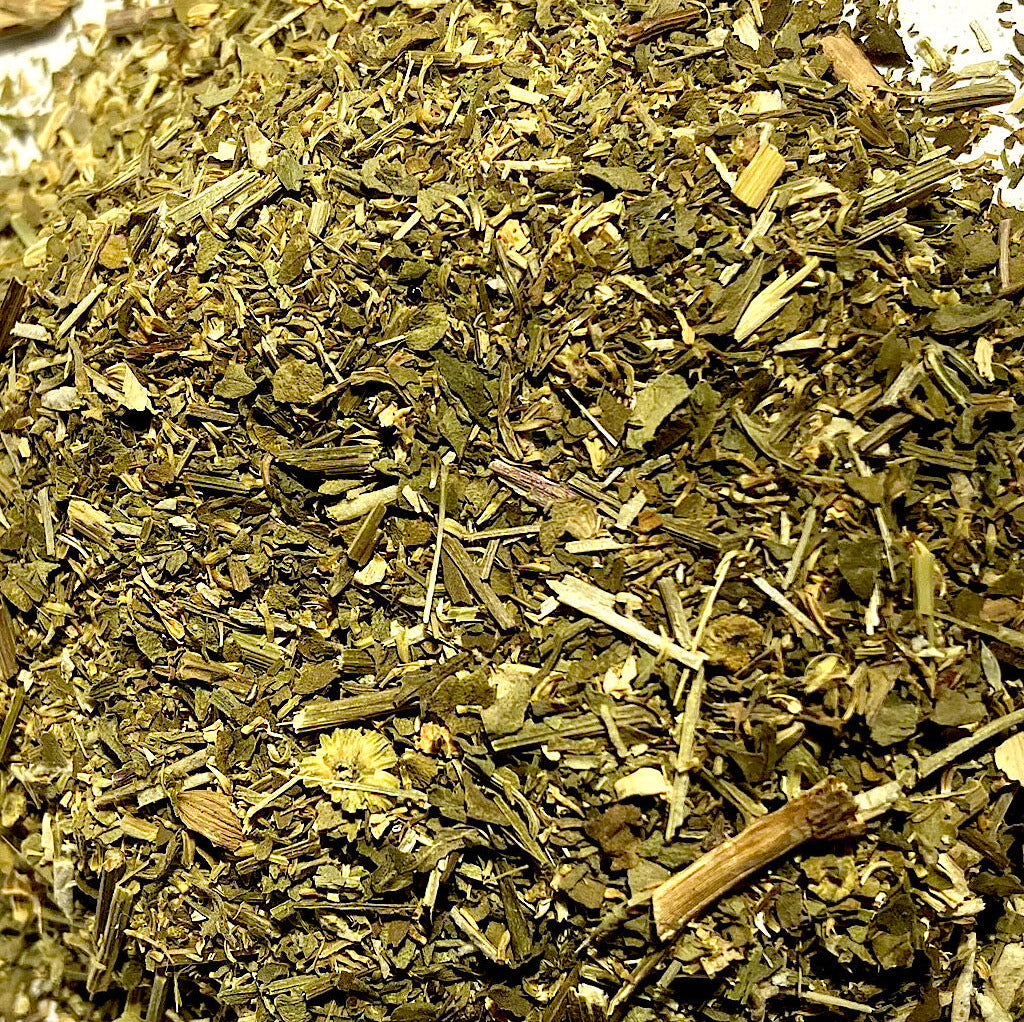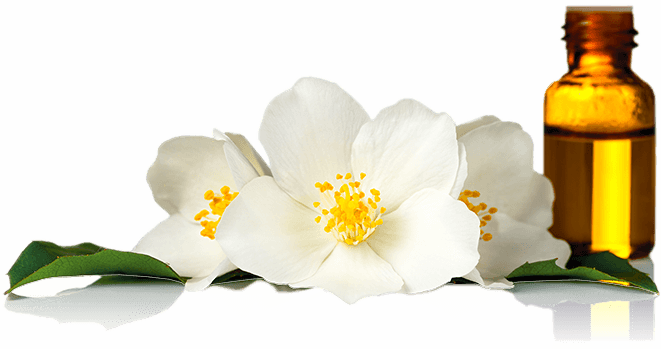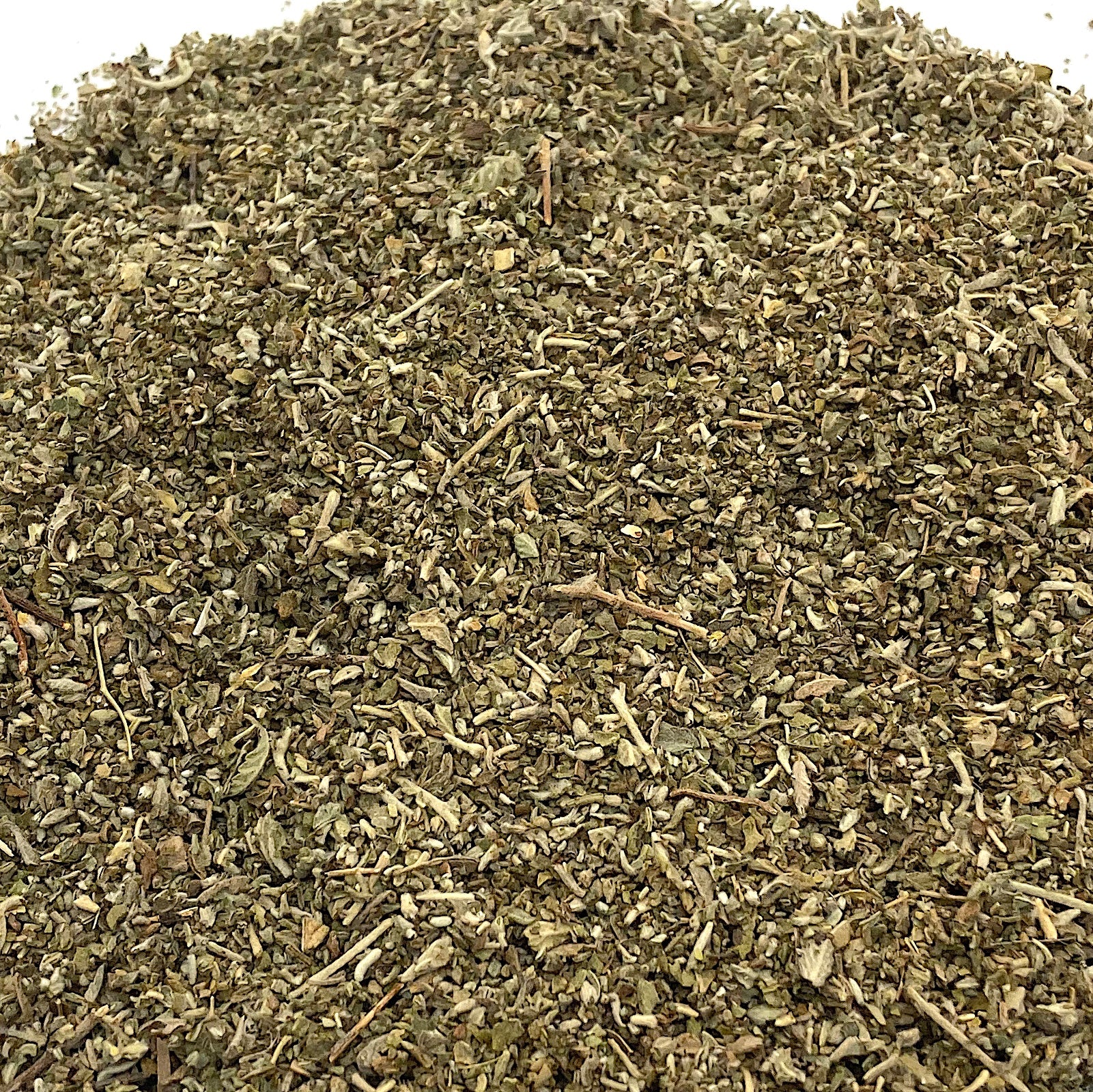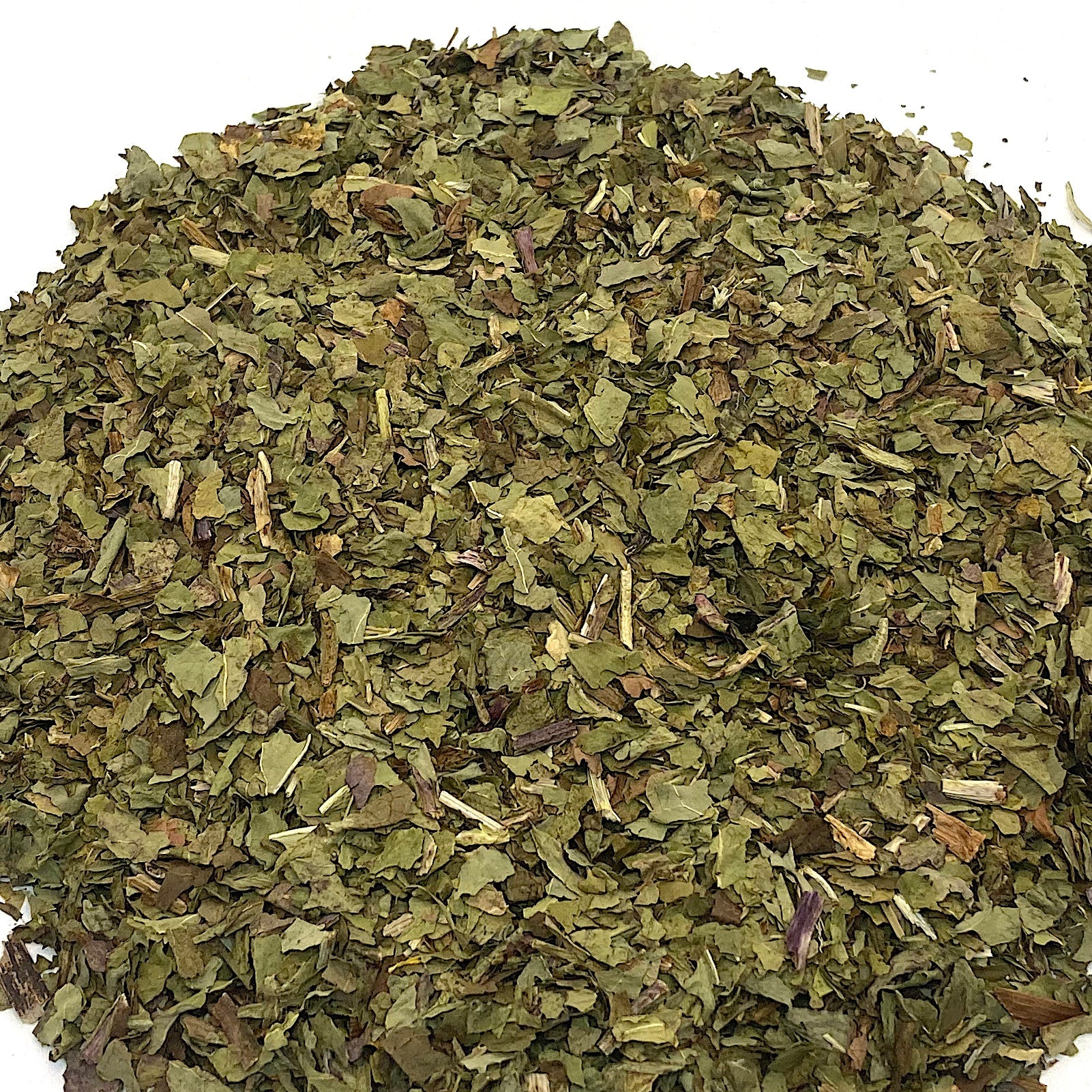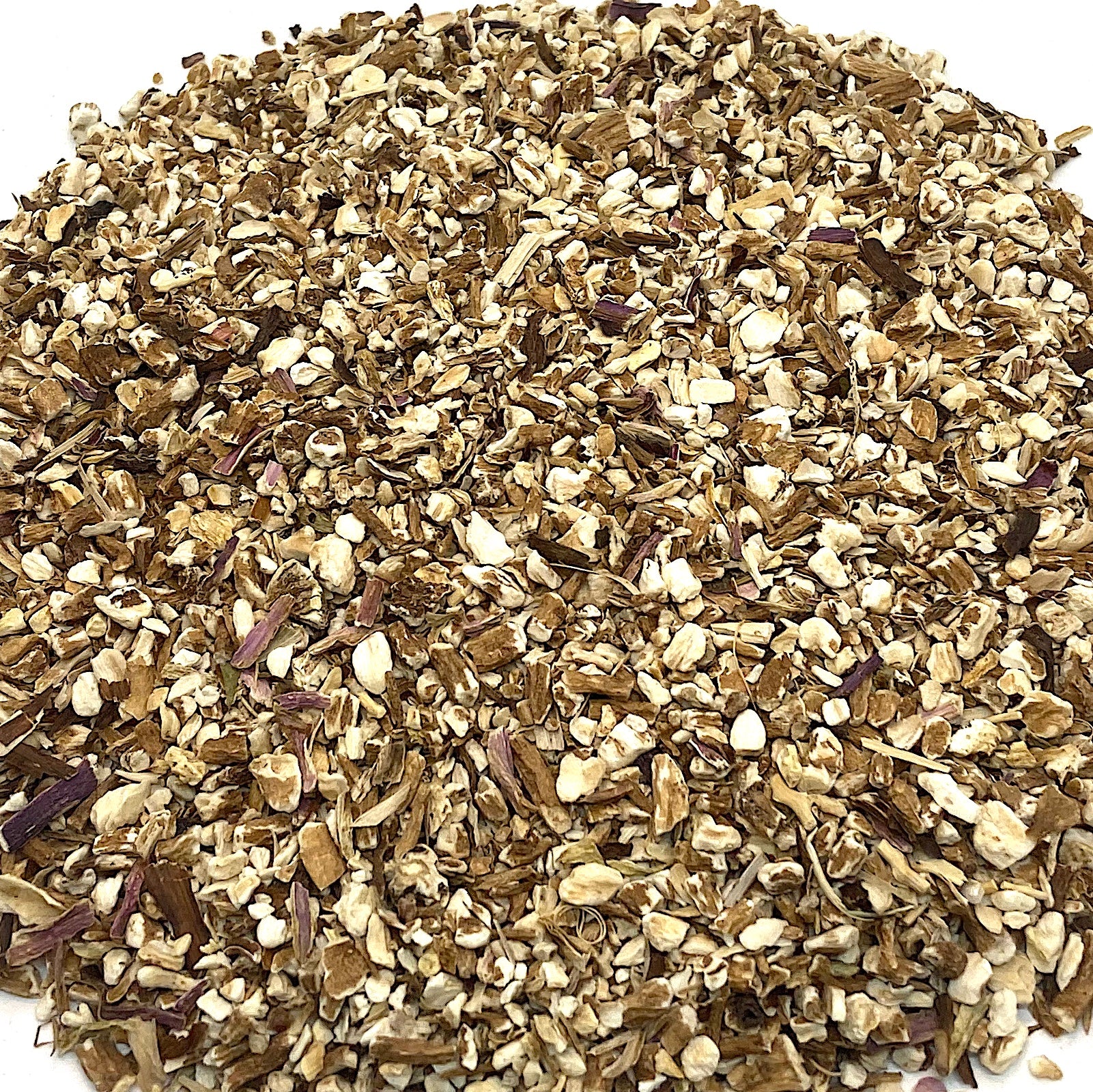Description
USA. Feverfew (Tanacetum parthenium), Cut and Sifted, Certified Organic
Common names: Altamisa Mexicana, Bachelor’s Buttons, Bride’s Buttons, Chamomile Grande, Chrysanthemum atricaire, Chrysanthemum parthenium, Featherfew, Featherfoil, Federfoy, Flirtwort, Leucanthemum parthenium, Matricaria capensis, Matricaria eximia hort, Matricaria parthenium, Midsummer Daisy, Mother Herb, Mutterkraut, Nosebleed, Parthenium hysterophorus, Pyrethrum parthenium, Wild Chamomile, Wild Quinine, Vetter-voo, Yerba de Santa Maria
Family: Asteraceae
Feverfew is a perennial herb that originated in Southeastern Europe and Anatolia, and is now found throughout Europe, and in North Africa, East Asia, Australia, and North America. It grows along roadsides, in fields and open places, and along the borders of woods. The plant grows between 12 and 18 inches tall. It has bright green foliage with yellow-centered flowers surrounded by white petals, resembling Chamomile somewhat, but with wider leaves, and a strong bitter scent. Maud Grieve, in A Modern Herbal, writes of Feverfew, “Planted round dwellings, it is said to purify the atmosphere and ward off disease.”
Feverfew has long been heralded as an herb to help with migraine and cluster headaches when taken daily as a preventative. It has a long history of use in Greek and European folk medicine, and has been widely adopted into a number of Latin American cultures as well. Slower-acting but stronger than aspirin, it has been used to treat inflammation and pain in many conditions such as arthritis, neuralgia, earaches, toothaches, insect bites, dysmenorrhea and labor pains, and kidney pain. Traditional uses include treatment of fevers, coughs and colds, depression, dizziness, hay fever and allergies, asthma, dermatitis, and psoriasis.
It is a bitter tonic that improves digestion and kidney function, stimulates appetite, and relieves stomach aches, nausea, vomiting, and constipation. In general it is classified as a cooling herb that is beneficial in syndromes involving heat, although it is rarely used for fever as such anymore. Due to its bitterness, it is often easier to use as a tincture or in capsules than as a tea.
Feverfew is also well known as an emmenagogue, inducing menstruation and aiding expulsion of the placenta after childbirth, and has been prescribed for infertility and menopausal symptoms. It should not be used during pregnancy, or with blood-thinning medications.
The main active principles in Feverfew are sesquiterpene lactones, especially parthenolide. Other active compounds include flavonoids, volatile oils, terpenes, and coumarins.
Grown in Certified Organic soil in Oregon, USA.
*These statements have not been evaluated by the FDA. These products are not intended to diagnose, treat, cure or prevent any disease.

